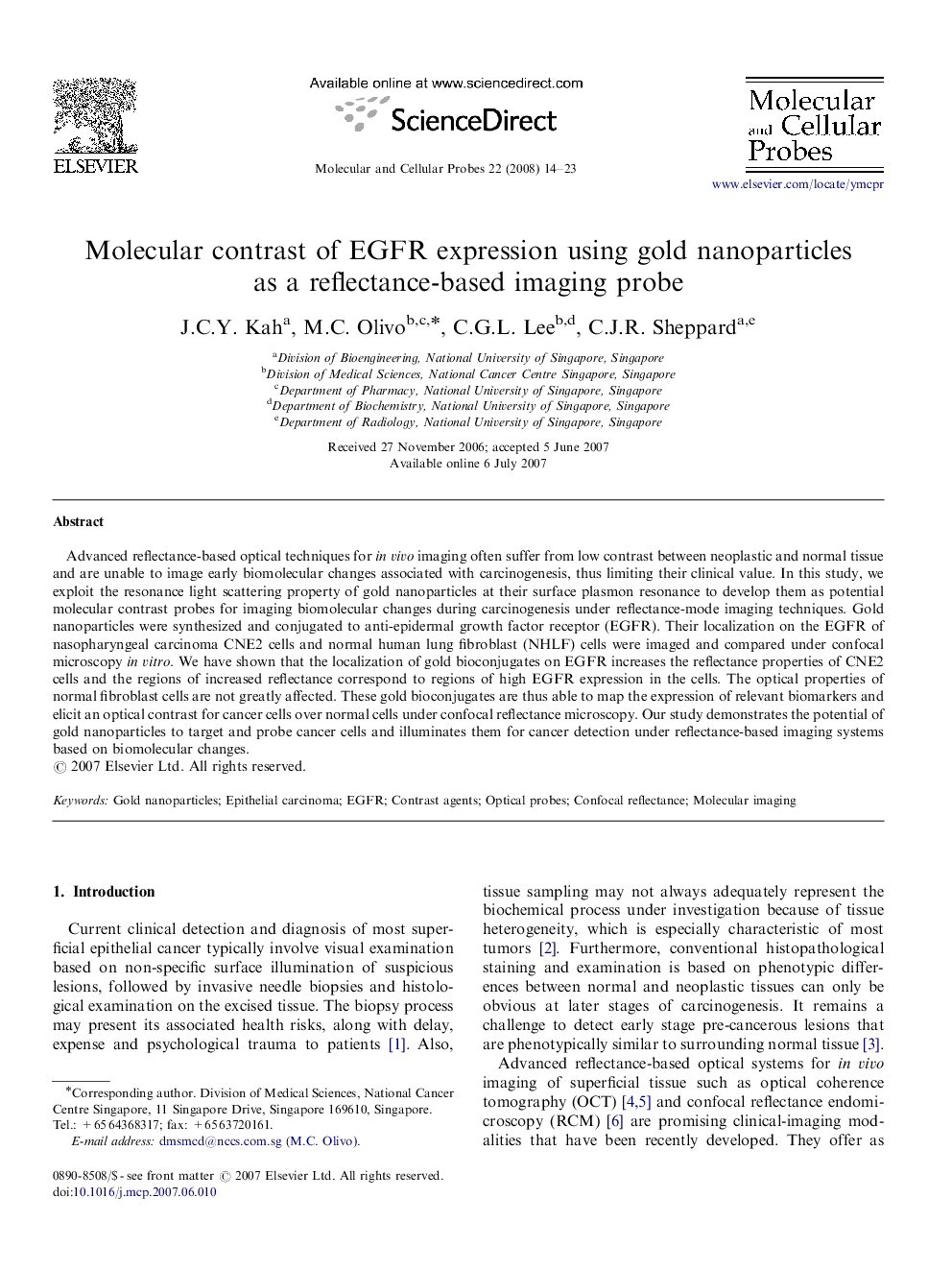| Article ID | Journal | Published Year | Pages | File Type |
|---|---|---|---|---|
| 2200131 | Molecular and Cellular Probes | 2008 | 10 Pages |
Advanced reflectance-based optical techniques for in vivo imaging often suffer from low contrast between neoplastic and normal tissue and are unable to image early biomolecular changes associated with carcinogenesis, thus limiting their clinical value. In this study, we exploit the resonance light scattering property of gold nanoparticles at their surface plasmon resonance to develop them as potential molecular contrast probes for imaging biomolecular changes during carcinogenesis under reflectance-mode imaging techniques. Gold nanoparticles were synthesized and conjugated to anti-epidermal growth factor receptor (EGFR). Their localization on the EGFR of nasopharyngeal carcinoma CNE2 cells and normal human lung fibroblast (NHLF) cells were imaged and compared under confocal microscopy in vitro. We have shown that the localization of gold bioconjugates on EGFR increases the reflectance properties of CNE2 cells and the regions of increased reflectance correspond to regions of high EGFR expression in the cells. The optical properties of normal fibroblast cells are not greatly affected. These gold bioconjugates are thus able to map the expression of relevant biomarkers and elicit an optical contrast for cancer cells over normal cells under confocal reflectance microscopy. Our study demonstrates the potential of gold nanoparticles to target and probe cancer cells and illuminates them for cancer detection under reflectance-based imaging systems based on biomolecular changes.
